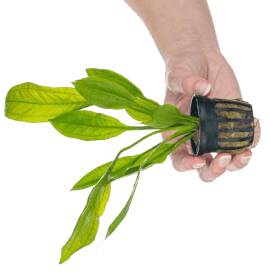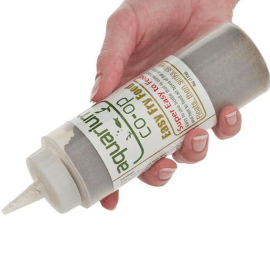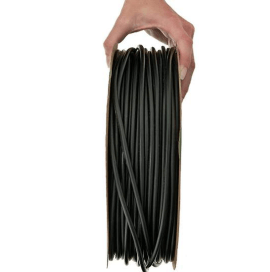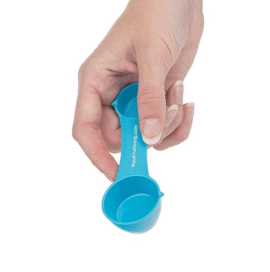How to Clear Up a Cloudy Fish Tank
Cloudy water can be very frustrating, since it prevents you from fully enjoying your beautiful fish tank. In this article, we explore the many reasons why your aquarium may look hazy and how to clear up the murkiness as quickly as possible.
The first thing you need to do is pour some of the tank water into a plastic cup or bucket that is solid white on the inside. This will allow you to examine the color and cloudiness of the water more carefully without interference.
1. Particles in the Water
If there are specks or particles in the water, the cloudiness is mostly likely caused by fish waste, excess food, dusty substrate, or other miscellaneous debris. For example, when setting up a new tank or planting aquarium plants, tiny bits of substrate may float into the water column. Usually, the powder settles or gets collected by the filter after a few days, but if you’re still having issues after a week, you may need to do multiple large water changes or thoroughly rinse the substrate until all the silt is washed away.
If the aquarium has not been cleaned in a while, then setting a regular schedule for tank maintenance will help remove the excess waste so that the water remains consistently clean and clear. We highly recommend that you use an aquarium siphon to vacuum the substrate and change out the water. (Read this article for a step-by-step guide on how to use a gravel vacuum.)

Also, don’t forget to clean the filter once every month. Your filter is like a garbage can for collecting waste, and when it gets full, it can no longer collect particles from the water. Squeeze the sponge filter or gently swish your filter media in a bucket of old tank water to remove the accumulated debris. (Remember that after you clean your tank and filter, the water may remain cloudy for a couple of hours until the filter has a chance to re-gather the floating specks.)
If you regularly clean your aquarium but still have murky water, it may be caused by the foods you feed. Messy fish foods (typically the kinds that contain very few binders) can turn into dusty fish poop that breaks apart very easily in the water. Instead, try to feed “cleaner” foods – such as live foods or single-ingredient, frozen foods like frozen bloodworms – that will get gobbled up quickly and turn into more cohesive fish waste.
If you keep eartheaters and other bottom feeders, they tend to stir up the substrate as they search for food at the floor of the aquarium. If they perpetually cause cloudiness in your aquarium, you may need to add more mechanical filtration to scrub the water. Mechanical filtration is any type of filtration that physically strains out debris from the water, much like a coffee filter. Hang-on-back, canister, undergravel and sponge filters all help with mechanical filtration. If you have a customizable filter, add a prefilter sponge to cover the intake tube, use a coarse sponge pad to catch the larger particles, and get a fine poly pad to trap the smallest particles. (Fine poly pads are not reusable and should be replaced when they become clogged with gunk.) Additionally, you can improve water circulation with power heads to eliminate any dead spots in the aquarium and make sure any loose particles get sucked up by the filter.
Lastly, water clarifiers can be used to clear up cloudy water caused by debris. They contain a special clay or chemical that bonds with suspended debris particles, causing them to clump together so that they get caught by the filter more easily or settle to the substrate. Because the water clarifier sticks to the particles to increase its size, oftentimes the cloudiness can look worse before the filter has a chance to gather all the debris.
2. Bacterial Bloom
Now if you’re looking at the tank water in a white cup and it looks like diluted milk (with almost no visible particles), you may be dealing with a bacterial bloom. When there’s an excess of nutrients in the water and not enough beneficial bacteria to consume it all, the bacteria colony compensates by rapidly reproducing. This sudden population boom makes the water look like someone poured a spoonful of milk into the tank. (For more information on what is beneficial bacteria, read our guide to the aquarium nitrogen cycle.)

Bacterial blooms often occur when cycling a aquarium or if a big group of fish is suddenly added to the tank because there isn’t enough beneficial bacteria to support the ecosystem yet. It can also happen if a significant portion of the beneficial bacteria is removed or killed – such as by repeatedly changing large volumes of tank water, overcleaning your filter (especially if it hasn’t been serviced in many months), or using certain medications that are not safe for beneficial bacteria.
The solution is simple: do nothing. Don’t add a UV sterilizer or do lots of water changes to remove the haziness; this just makes the bacterial bloom last even longer. Instead, wait one to two weeks, and the water will gradually clear up on its own as the bacteria reestablishes itself again.
3. Green Water
Bacteria isn’t the only microorganism that can cause cloudy water. If the tank water in your white cup has a green tint (or your aquarium looks like it’s full of pea soup), you’re probably dealing with an algae bloom. Green water is caused by tiny, free-floating algae and is actually very good for raising baby fish. It provides lots of miniscule food for the fry, while preventing bigger fish from predating on them. Unfortunately, it also prevents you from seeing into your aquarium and can potentially block light from reaching your plants.

Green water is often caused by a combination of too much light and too many nutrients (often coming from excess food, fish waste, and fertilizers). Like bacterial blooms, green water cannot be removed by fine filter floss or giant water changes. Since algae requires photosynthesis to make food, some people recommend doing a large water change, turning off the aquarium light, wrapping a blanket around the tank for 7 to 10 days, and then doing another large water change afterwards to take out the dead algae. (Green water can survive off very little light, so make sure the aquarium is completely blacked out.) Be careful with this method because your plants may suffer from the lack of light. Also, the dead algae can create an ammonia spike that harms the fish or causes another green water bloom from the excess nutrients.
Instead of using the blackout method, we recommend getting a UV sterilizer. (Green water is fairly easy to treat, so you don’t need to get a very big one.) The UV actually changes the cell structure of the algae so that it can’t reproduce. Once they’ve been sterilized, you can do multiple water changes over time to remove the green water, and soon enough your water will be clear again!
4. Brown Water
When your tank water has a brown tinge instead of green or milky white, it’s often caused by tannins – an organic compound naturally found in catappa leaves, driftwood, and other botanical materials. Tannins are often used to keep and breed certain fish that prefer blackwater environments, but most people prefer to keep aquariums with crystal clear water.

Manual water changes can help remove brown water gradually over time, as long as you’re not adding any more sources of tannins. If you have a new piece of driftwood, soaking or boiling it can help the tannins leech out more quickly. If these approaches still don’t work, try using chemical filtration – such as activated carbon in a filter bag, carbon pads, or Seachem Purigen – in a hang-on-back or canister filter. Activated carbon becomes clogged up with tannins and toxins over time and must be disposed of. Purigen, on the other hand, is reusable and can be “refreshed” with bleach to remove the impurities it collects.
5. Cloudy Aquarium Walls
If you don’t see anything in your white cup of tank water, it could be the aquarium walls causing the problem. To make sure your main viewing panels are clear, scrub them on the inside with an algae scrubber, and wipe the outside of the tank using an aquarium-safe cleaner. (If you have an acrylic aquarium, make sure you’re using an acrylic-safe scrubber like ours that won’t cause micro-scratches everywhere.) Finally, the glare caused by lights around your aquarium can sometimes look like haziness, so try adding an aquarium background either on the inside or outside of the tank.

Not sure how often you need to clean your fish tank? Check out our free guide that teaches you what kind of water change schedule is right for your aquarium!




